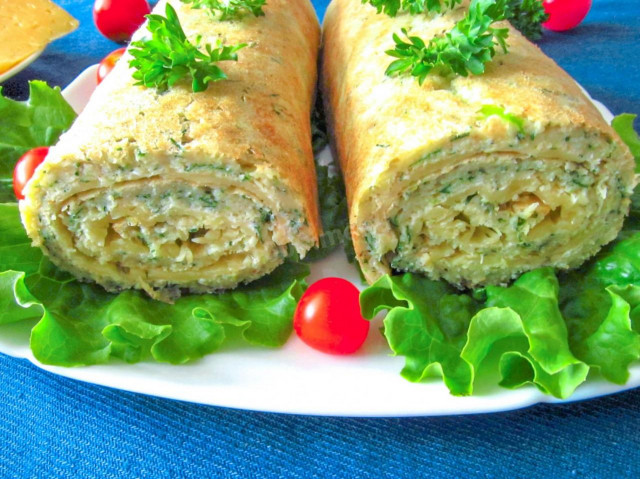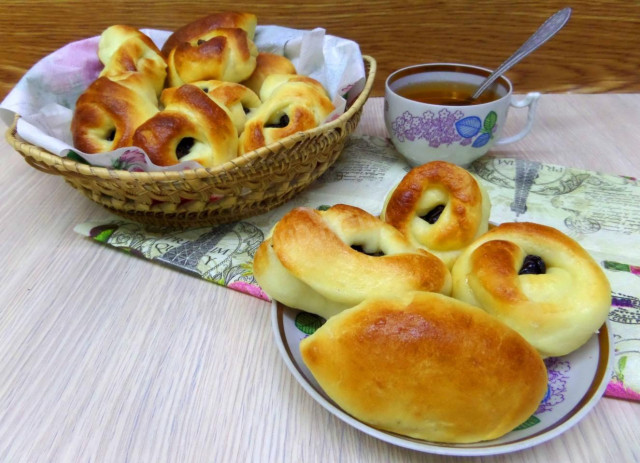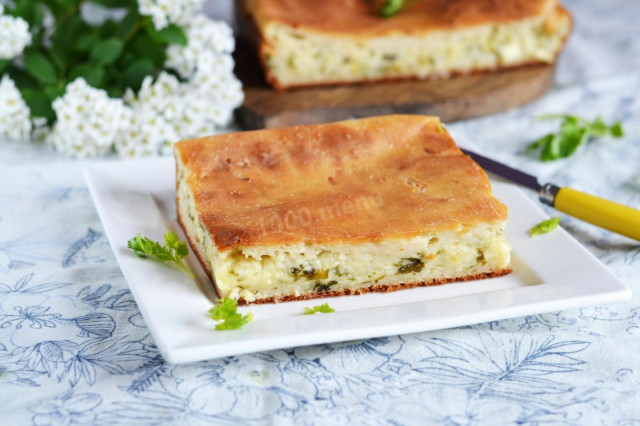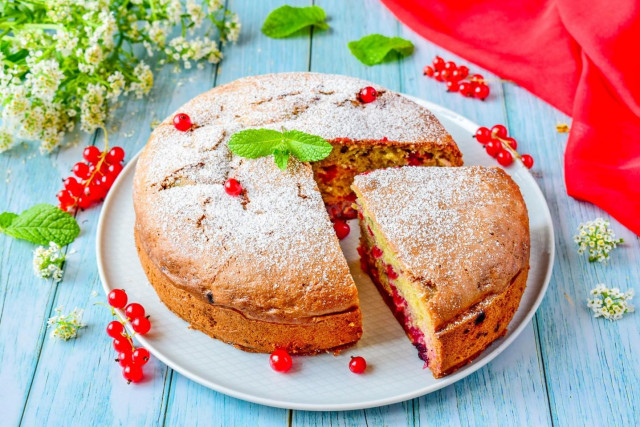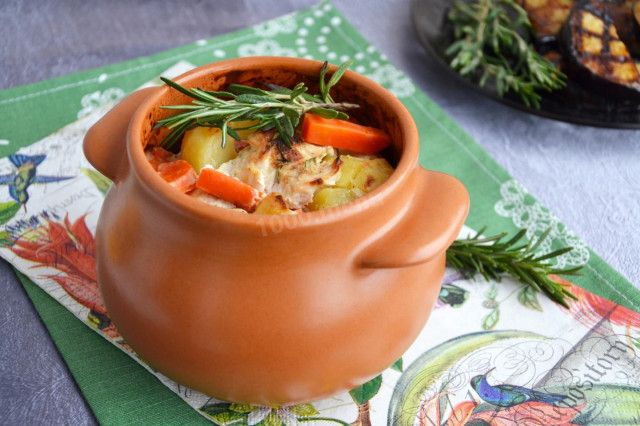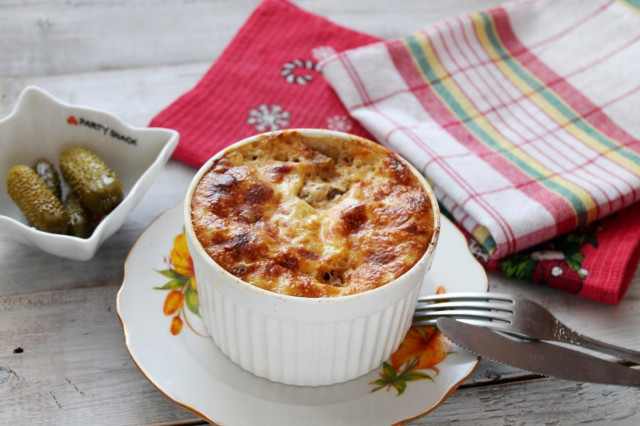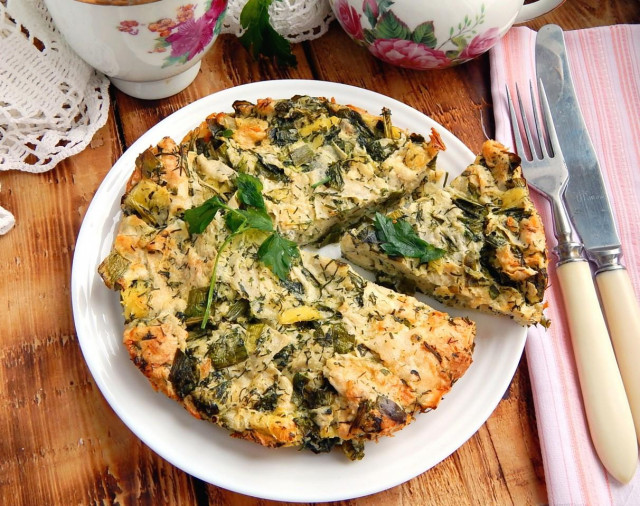Composition / ingredients
Step-by-step cooking
Step 1:
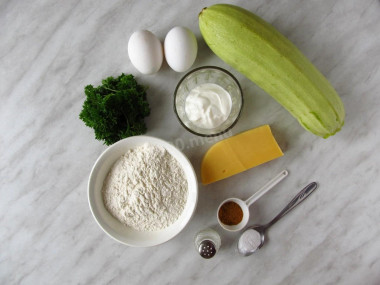
How to make a zucchini roll with cheese? Prepare the products. Which zucchini will work best? Choose young fruits with tender skins. Wash them and peel them. It is not necessary to cut off a very thin skin. If you use more mature zucchini, cut off the rough peel and cut out the middle with the seeds.
Step 2:
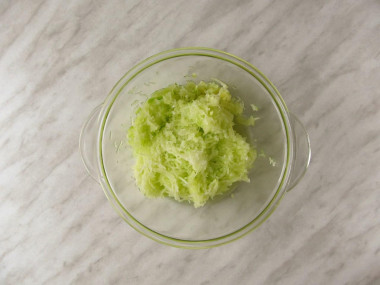
Grate the squash on a fine grater, add salt, then squeeze the juice well.
Step 3:
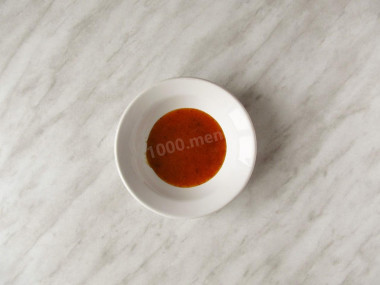
Wash the eggs, then separate the yolks from the whites. Be sure to wash the eggs before use, as even the seemingly clean shell may contain harmful bacteria. It is best to use food detergents and a brush. Lightly whisk the yolks with salt and spices. Choose spices according to your taste or availability.
Step 4:
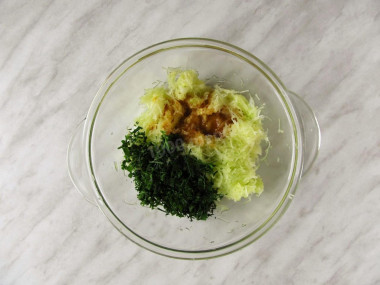
Wash the greens, dry well and chop finely. Combine the zucchini, yolks, finely chopped greens and mix.
Step 5:
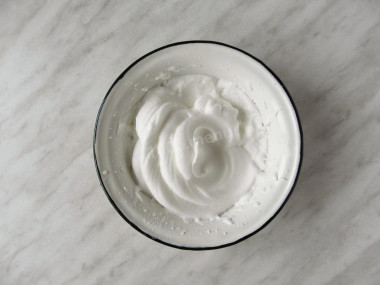
In a separate bowl, whisk the whites into a strong foam.
Step 6:
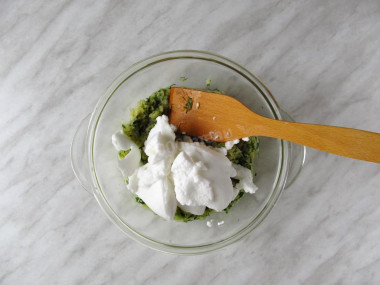
Add half of the whipped proteins to the vegetable mass. Mix the mass with a spatula with very careful movements from bottom to top.
Step 7:
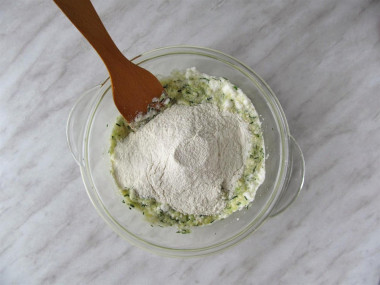
Pour in the flour sifted with baking powder and mix gently as well.
Step 8:
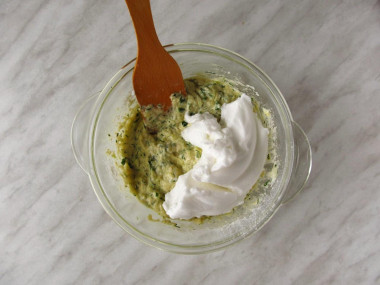
Then enter the remaining proteins and mix until smooth with the same movements from bottom to top. It is important to act carefully to preserve the air bubbles that have formed during whipping. They will make the dough airy.
Step 9:

Cover the baking sheet with baking paper. Lubricate it with oil. Put the dough on paper, gently smooth it with a spatula. The thickness of the layer should be no more than 1 cm. Put the baking sheet with the dough to bake in the oven, preheated to 180 degrees.
Step 10:
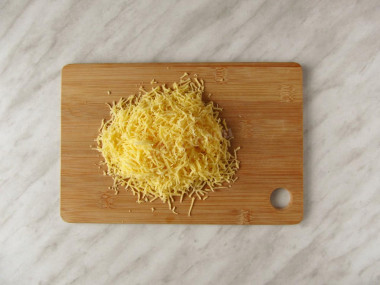
While the cake is baking, grate the cheese on a fine grater.
Step 11:
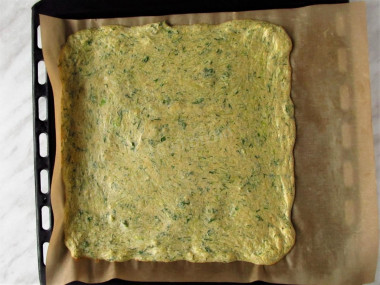
The finished cake looks almost not browned. If the dough springs slightly when pressed, and is not pressed, then the cake is ready. It will take 15-20 minutes to bake.
Step 12:
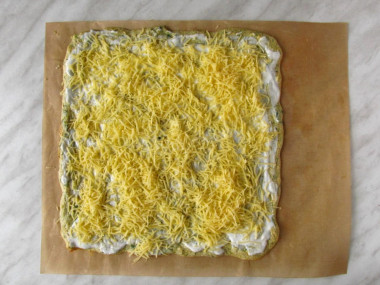
Remove the finished squash cake from the baking sheet along with the paper and spread it with sour cream in hot form. If desired, you can add chopped garlic to the sour cream, this will make the snack sharper. Then sprinkle the cake evenly with grated cheese.
Step 13:
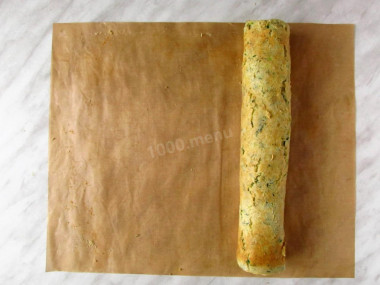
While the cake has not cooled down, gently but quickly roll up the roll, separating it from the parchment. The cheese inside should melt, which is why it is important that the cake is warm. Let the roll cool and then chill.
Step 14:
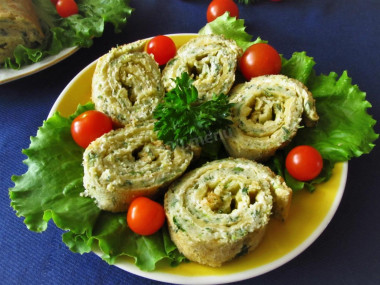
Cut the roll into portions and serve it to the table, garnished with herbs. Enjoy your meal!
It is important to use good quality parchment so that the squash cake does not stick too much. You can use a silicone or Teflon mat.
Any cheese is suitable for this dish — hard, semi-hard, soft, like mozzarella. The main thing is that it is tasty, high-quality, without milk fat substitutes and melts well.
Keep in mind that everyone's ovens are different. The temperature and cooking time may differ from those specified in the recipe. To make any baked dish successful, use useful information about the features of ovens !
It is important to sift the flour to saturate it with oxygen. Then the baking will turn out to be airy and will rise well when baking.
Caloric content of the products possible in the composition of the dish
- Sour cream with 30% fat content - 340 kcal/100g
- Sour cream of 25% fat content - 284 kcal/100g
- Sour cream with 20% fat content - 210 kcal/100g
- Sour cream of 10% fat content - 115 kcal/100g
- Sour cream - 210 kcal/100g
- Chicken egg - 157 kcal/100g
- Egg white - 45 kcal/100g
- Egg powder - 542 kcal/100g
- Egg yolk - 352 kcal/100g
- Ostrich egg - 118 kcal/100g
- Zucchini - 23 kcal/100g
- Dutch cheese - 352 kcal/100g
- Swiss cheese - 335 kcal/100g
- Russian cheese - 366 kcal/100g
- Kostroma cheese - 345 kcal/100g
- Yaroslavsky cheese - 361 kcal/100g
- Altai cheese 50% fat content - 356 kcal/100g
- Soviet cheese - 400 kcal/100g
- Cheese "steppe" - 362 kcal/100g
- Uglich cheese - 347 kcal/100g
- Poshekhonsky cheese - 350 kcal/100g
- Lambert cheese - 377 kcal/100g
- Appnzeller cheese with 50% fat content - 400 kcal/100g
- Chester cheese with 50% fat content - 363 kcal/100g
- Edamer cheese with 40% fat content - 340 kcal/100g
- Cheese with mushrooms of 50% fat content - 395 kcal/100g
- Emmental cheese with 45% fat content - 420 kcal/100g
- Gouda cheese with 45% fat content - 356 kcal/100g
- Aiadeus cheese - 364 kcal/100g
- Dom blanc cheese (semi-hard) - 360 kcal/100g
- Lo spalmino cheese - 61 kcal/100g
- Cheese "etorki" (sheep, hard) - 401 kcal/100g
- White cheese - 100 kcal/100g
- Fat yellow cheese - 260 kcal/100g
- Altai cheese - 355 kcal/100g
- Kaunas cheese - 355 kcal/100g
- Latvian cheese - 316 kcal/100g
- Limburger cheese - 327 kcal/100g
- Lithuanian cheese - 250 kcal/100g
- Lake cheese - 350 kcal/100g
- Gruyere cheese - 396 kcal/100g
- Salt - 0 kcal/100g
- Spices dry - 240 kcal/100g
- Wheat flour - 325 kcal/100g
- Baking powder - 79 kcal/100g
- Fresh frozen soup greens in a package - 41 kcal/100g
- Greenery - 41 kcal/100g

